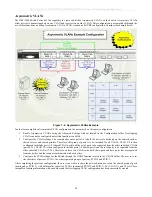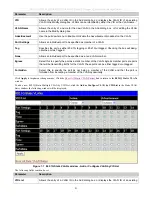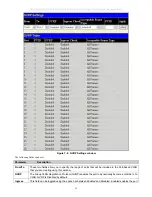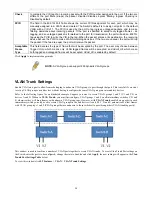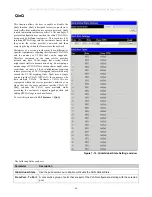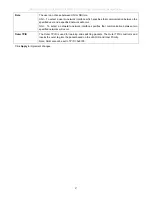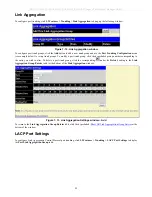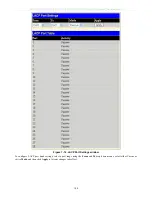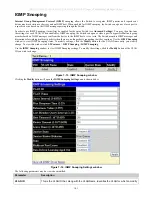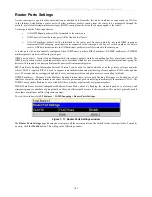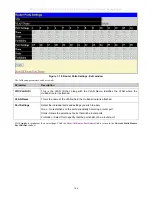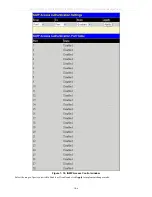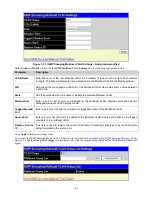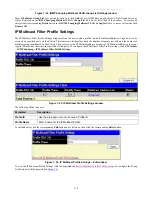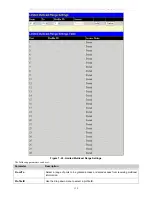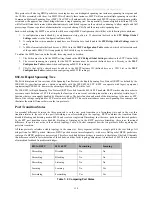
DES-3028 DES-3028P DES-3028G DES-3052 DES-3052P Layer 2 Fast Ethernet Managed Switch
Router Ports Settings
A static router port is a port that has a multicast router attached to it. Generally, this router would have a connection to a WAN or
to the Internet. Establishing a router port will allow multicast packets coming from the router to be propagated through the
network, as well as allowing multicast messages (IGMP) coming from the network to be propagated to the router.
A router port has the following behavior:
All IGMP Report packets will be forwarded to the router port.
IGMP queries (from the router port) will be flooded to all ports.
All UDP multicast packets will be forwarded to the router port. Because routers do not send IGMP reports or
implement IGMP snooping, a multicast router connected to the router port of a Layer 3 switch would not be able to
receive UDP data streams unless the UDP multicast packets were all forwarded to the router port.
A router port will be dynamically configured when IGMP query packets, RIPv2 multicast, DVMRP multicast or PIM-DM
multicast packets are detected flowing into a port.
IGMP query packets – Internet Group Management Protocol query packets work by controlling the flow of multicast traffic. The
IGMP query packets works by sending messages out to determine which devices are members of a particular multicast group, the
devices will respond to the query and inform the querier of its membership status.
RIPv2 multicast- Routing Information Protocol Version 2 can be used for small networks or on the perifory of larger networks
where VLSM is required. RIPv2 is used to support route authentication and multicasting of route updates. RIPv2 sends updates
every 30 seconds and it uses triggered updates to carry out loop-prevention and poison reverse or counting to infinity.
DVMRP multicast – Distance Vector Multicast Routing Protocol uses reverse path flooding. Messages are flooded out of all
interfaces except the one that returns to the souce, this is to prevent any packets traveling to members of the multicast VLAN. The
DVMRP uses periodic flooding so as to establish if there are other or potentially new group members.
PIM-DM multicast- Protocol Independent Multicast Dense Mode works by flooding the multicast packets to all routers and
eliminates groups or members of groups that don’t have an efficient path or route to their members. This mode is generally used if
the volume of multicast traffic is large and constant.
To view this window click
L2 Features
>
IGMP Snooping > Router Ports Settings
.
Figure 7- 17. Router Ports Settings window
The
Router Ports Settings
page (shown above) displays all the current entries on the Switch's static router port table. To modify
an entry, click the
Modify
button. This will open the following window:
103
Содержание DES-3028
Страница 306: ......
Страница 307: ......
Страница 327: ...D Link D Link D Link D Link 7 495 744 00 99 http www dlink ru e mail support dlink ru...
Страница 332: ...Technical Support Web Web URL http www dlink jp com...

